 |   | |
| European Climate Adaptation Newsletter | Issue September 1, 2023 | |
EU policy and EEA activities | Transnational, national, and local activities | Climate-ADAPT - new features | Research and assessments | Events | Subscribe | ||
| EU policies and EEA activities | |||
1. New European Commission guidelines on EU Member States' adaptation strategies, plans and policies The European Commission has adopted a new set of guidelines to assist Member States in updating and implementing comprehensive national adaptation strategies, plans and policies. The guidelines align with the European Climate Law and the EU Strategy on Adaptation to Climate Change. They can help to upgrade preparations for the reality of the rapidly intensifying impacts of climate change. Nature-based solutions and just resilience are some of the new approaches and policy areas proposed that need to be considered in policy-making to ensure better outcomes. << Read more | 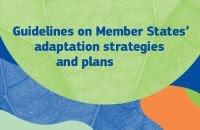 © European Commission | ||
2. Shaping the future of the EU Mission on Adaptation to Climate Change Representatives of the EU institutions, charter signatories, Friends of the Mission, national and regional authorities, financial institutions, and researchers reflected in mid-June on how to increase collaboration to deliver on adaptation, improve climate risk management practices and societal preparedness, and accelerate the uptake of adaptation solutions across the society and different levels of administration. << Read more | 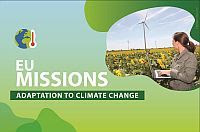 © European Commission | |
3. Horizon Europe Strategic Plan 2025-2027 Analysis The recently published Horizon Europe Strategic Plan 2025-2027 Analysis provides an evidence base to underpin the development of the next Horizon Europe Strategic Plan, as set out in the legal basis. The analysis looks at relevant developments for the EU policy priorities and provides examples of t research and innovation’s role play in addressing them. The report analyses past EU research efforts in the global context regarding climate change adaptation. It further outlines research gaps related to climate change adaptation. << Read more | 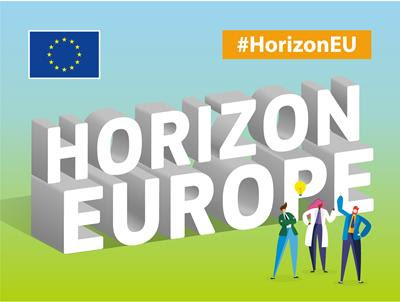 © European Commission | |
4. EU proposes new outlook on the climate and security nexus The European Commission and the High Representative adopted a Joint Communication to the European Parliament and the Council, laying out how the EU will address the growing impact of climate change and environmental degradation in peace, security, and defence. One of the four priorities is enhancing the climate adaptation and mitigation measures of Member States' civilian and military operations and infrastructure. Resilience to climate change is a key concept in Joint Communication. << Read more |  © Marco Antonio Casique Reyes - Pexels | |
5. Climate Resilience Dialogue of the European Commission - Interim Report published The Climate Resilience Dialogue is an initiative to narrow the climate protection gap and to find ways to stimulate investment in good adaptation. It is the implementation of one of the actions the European Commission announced in the EU Strategy on Adaptation to Climate Change and in the EU Strategy for Financing the Transition to a Sustainable Economy. The group, representing a full range of stakeholders, released its interim report on 27 July 2023. << Read more |  © European Commission | |
6. Call for feedback on LIFE programme for mid-term evaluation The European Commission will conduct a mid-term evaluation of the LIFE programme for the environment and climate action (2021-2024) to improve the implementation and help inform the proposal for the subsequent programme. Feedback period: 1 August 2023 - 15 September 2023. << Read more |  © European Commission | |
7. What could the summer bring? Is extreme weather the new normal? The new EEA product ‘Extreme summer weather in a changing climate: is Europe prepared’ looks at the main summer weather extremes that have increasingly impacted the European population, economy and nature. Users can explore interactive maps and charts with information on heatwaves, floods, droughts and wildfires, and the rise of climate-sensitive diseases like dengue fever – and how prepared we are as a society. << Read more |  © Kelly Sikkema - Unsplash | |
8. Monitoring report on progress towards the Sustainable Development Goals in a European context The analysis in this publication builds on the EU Sustainable Development Goals indicator set, developed in cooperation with many stakeholders. The report also covers progress on climate action, including adaptation to climate change, such as the population covered by EU Climate Action through the Covenant of Mayors for Climate and Energy. << Read more | 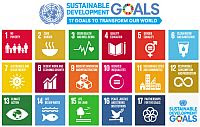 © United Nations | |
9. North Macedonia joins the EU LIFE programme for environment and climate action North Macedonia is the fourth non-EU country to join the LIFE programme for environment and climate action, after Iceland, Ukraine, and Moldova. By joining this programme, this Balkan country will have the opportunity to benefit from LIFE’s support for mobilising public and private resources for climate action, biodiversity protection, circular economy and clean energy transition. << Read more |  © European Commission | |
| Transnational, national, and local activities | ||
10. Policy brief: Stronger together for a climate resilient North – Mainstreaming adaptation to climate change at the local level in the Nordic Countries The policy brief presents the results of the 6th Nordic Conference of Climate Change Adaptation (NOCCA23): the conference explored the current state of adaptation and the challenges, opportunities, and learnings from the implementation process of adaptation in Denmark, Finland, Iceland, Norway, and Sweden. Finally, the role of the Nordic Council in accelerating adaptation measures within the Nordic region and beyond is discussed. << Read more |  © 3093594 - Pixabay | |
11. New Budapest Declaration commits European countries to develop ‘Health National Adaptation Plans’ Adopted on 7 July 2023 by the countries of the WHO European Region, the Budapest Declaration formulates political commitments and actions to address the health risks posed by the triple crisis of climate change, pollution and biodiversity loss. It could become a real game-changer for the health sector’s engagement with climate change, and for the climate policy contribution to health. With regard to adaptation policy, a key commitment is the development, updating and implementation of ‘Health National Adaptation Plans’, either as standalone documents, or as a part of wider National Adaptation Plans. << Read more |  © WHO European Region | |
12. The German city of Bonn’s new role in Global Resilience Hub: Building Bridges for Resilience The city of Bonn is now labelled as a global ‘Making Cities Resilient 2030’ (MCR2030) Resilience Hub. Joining the ranks of 23 cities recognized as Resilience Hubs: cities with a proven track record in disaster risk reduction and resilience, this German city is committed to bringing local and regional governments together to advance climate resilience efforts. Bonn intends to extend its outreach and address a larger resilience community by conducting online activities and international conferences, such as a Youth Adaptation Forum, held on 8 June 2023. << Read more |  © Didgeman - Pixabay | |
13. Climate resilience for European protected areas The EUROPARC Federation is the network for Europe’s natural and cultural heritage to improve the management of Protected Areas in Europe. A special edition of a EUROPARC Federation magazine provides insight into the climate change adaptation methodology created in the LIFE Natur’Adapt project. It contains articles from all over Europe detailing the actions already happening on the ground to adapt to climate change. It also guides to help the community of European Protected Area managers in their efforts to consider climate change in their practice. << Read more |  © Europarc Federation | |
14. Daring Cities 2023 dialogues for multilevel climate action
<< Read more |  © Daring Cities | |
15. How Danish agriculture can adapt to future climate change Researchers from Aarhus University, funded by the Danish Ministry of Food, Agriculture and Fisheries, have published a report highlighting the impact of climate change on Danish agriculture, and possible adaptation strategies that can make Danish agriculture more resilient. << Read more | 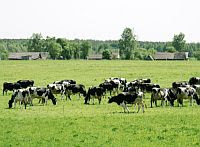 © Grisha Besko - Pexels | |
16. Adaptation to climate change of schoolyards in Spain The Foundation of Natural Heritage of Castilla y Leon has developed a climate adaptation program for public schools, together with the Governmental Regional Departments of Environment and Education of the Junta de Castilla y Leon in Spain. This program, financed by ‘Recovery assistance for cohesion and the territories of Europe’ (REACT-EU), supports the awareness and implementation of adaptation measures to climate change in outdoor spaces of educational centers, through actions based on Nature-based solutions. The Evaluation Commission recently selected 65 applications.. << Read more |  © Kelly Sikkema - Unsplash | |
| Climate-ADAPT – new features | ||
17. Improved access to adaptation measures portfolio 59 adaptation measures, available as generic ‘adaptation options’ for all sectors and impacts on Climate-ADAPT, can now be filtered by the ‘Key Type Measures’ they represent. This additional filter allows one to link those adaptation options to policy processes in Europe and at national levels in EEA Member countries. << Read more |  © EEA | |
18. More targeted search results for key adaptation approaches The extended Climate-ADAPT search function enables users to search for up-to-date and specific knowledge resources on just resilience, Nature-based solutions, Monitoring, reporting and evaluation (MRE). Those search options can be selected under the new filter ‘Adaptation elements’ on the Climate-ADAPT search page. << Read more |  © EEA | |
19. New Climate-ADAPT case study from Slovakia published Southeast of the Slovak Republic is covered by arable land and forests that are suffering from combined impacts of climate change and unsound land management. Based on past successful initiatives, the Košice region is implementing an ambitious Restoration Programme to reduce water runoff, counteract drought and heat waves, through different types of water retention structures in forests, agricultural land and cities. This case study will help fill a gap in terms of geographical coverage of case studies (Central Europe) on Climate-ADAPT.'Landscape and watershed Recovery Programme for the Košice Region (Slovakia)' << Read more | 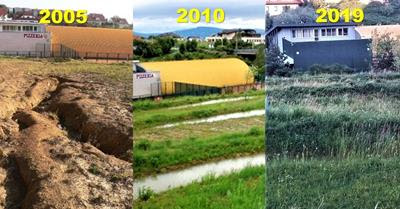 © Michal Kravčík | |
| Research and assessments | ||
20. Highlights of ECCA2023 conference More than 450 in-person delegates and over 1,000 online attendees promoted science, decision-support tools and case studies for climate adaptation during the 6th European Climate Change Adaptation Conference. The overall message was the importance of involving society in implementing adaptation in every generation, every level of government and every sector. << Read more | 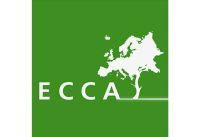 © European Commission | |
21. Taming wildfires in the context of climate change This OECD report provides a global assessment and outlook on wildfire risk in the context of climate change. It underlines the urgent need for governments to scale up climate change adaptation efforts to limit future wildfire costs. << Read more |  © CheMedia - Shutterstock | |
22. The EU 2022 wildfire season was the second worst on record In 2022, wildfires in 45 observed countries burnt an area about the size of Montenegro, hitting Natura 2000 protected sites hard. This year, France has already surpassed its annual average of fire-ravaged area. The Joint Research Centre provided the data for this assessment through its European Forest Fire Information System (EFFIS) as part of the Copernicus Emergency Management Service (CEMS). << Read more | 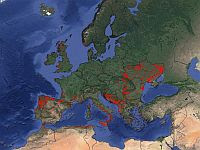 © European Union 2023 | |
23. Increasing tree coverage to 30% in European cities could reduce deaths linked to urban heat island effect Global warming and the expansion of the built environment are expected to intensify the urban heat island (UHI) effect and related adverse health impacts. A new study shows that increasing tree coverage to 30% would lower temperatures by an average of 0.4°C, avoiding about 1.8% of all summer deaths in European cities and nearly 40% of deaths attributable to UHI effects. << Read more |  © Tobias Terman Olsen | |
24. New analysis indicates European cities and countries with the highest expected losses from future flooding This study quantifies future flood risk in Europe by integrating climate, socio-economic and private precaution scenarios, offering a detailed overview of risk drivers, trends and hotspots. This large-scale assessment is valuable for multi-scale risk-based flood adaptation planning by European policymakers and states. << Read more |  © Christian Wasserfallen - Pexels | |
25. Climate adaptation progress in Europe The European Climate Neutrality Observatory (ECNO) tracks Europe’s progress toward achieving climate neutrality. Adapting to climate impacts will require various adaptation responses across sectors and governance levels. To track progress, one of the building blocks assesses the implementation of adaptation actions, specifically nature-based solutions in the urban context, land use sectors, and the aquatic environment. << Read more |  © Wageningen UR | |
| Events |
<< Read more
<< Read more
|










